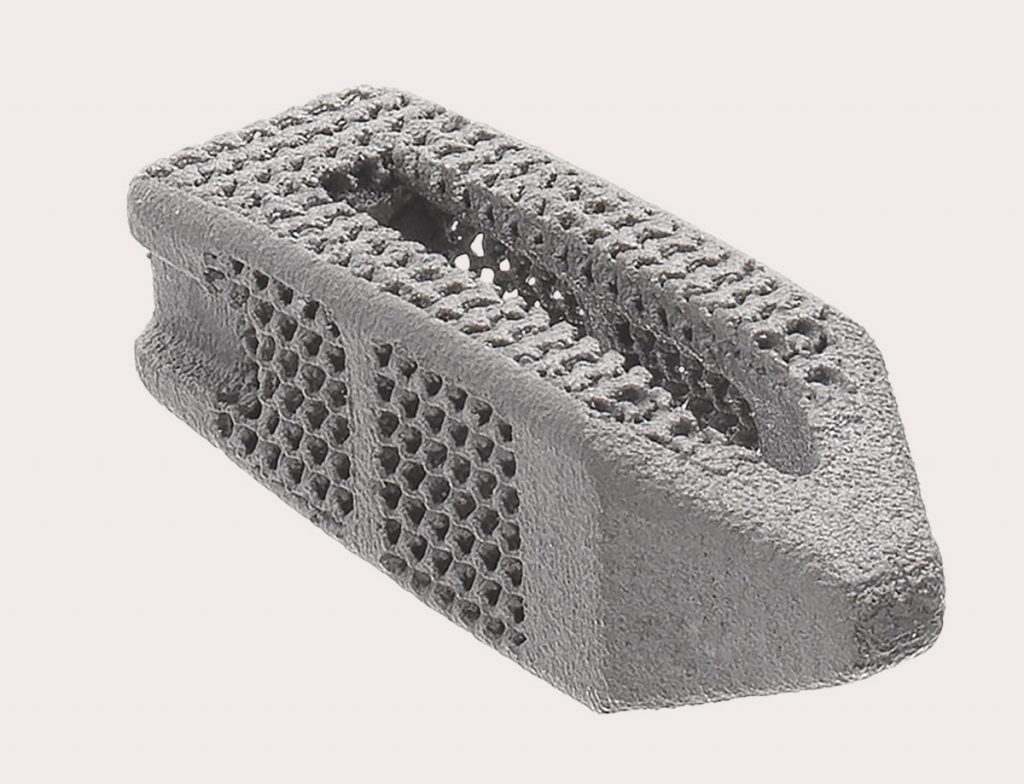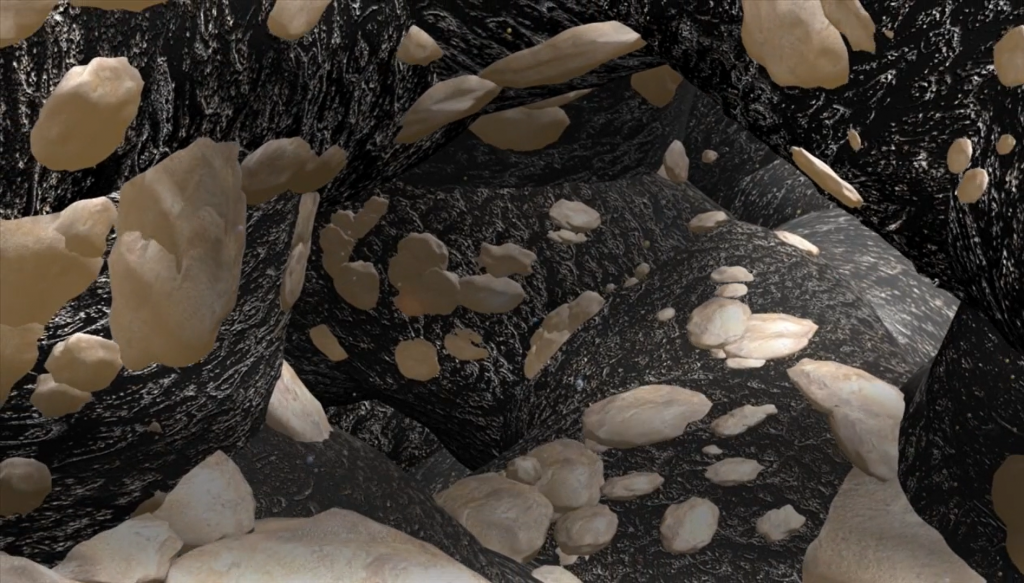Orthofix Medical, a Texas-based developer of 3D printed orthopedic devices, has launched its new FORZA Ti PLIF Spacer System.
Designed for use in Posterior Lumbar Interbody Fusion (PLIF) surgeries, the titanium implant features a complex 3D printed geometry, a porous structure, and a nanoscale surface texture that promotes bone growth through the spacer. As well as the product launch, Orthofix Medical has also announced the first patient implant using the lumbar interbody device, with more to come.
“The FORZA Ti PLIF Spacer System, featuring Orthofix’s unique Nanovate Technology, is one of several new 3D printed titanium products we have launched recently,” said Orthofix President of Global Spine Kevin Kenny. “The FORZA Ti system is also ideal for use with our flagship Trinity ELITE allograft with viable cells that supplies the essential components for new bone formation.”

后腰椎室内融合
PLIF是下背部脊柱融合手术的一种形式,从而将骨移植物或合成笼添加到脊柱区域,以引发生物学反应,从而促进两个椎骨之间的骨骼生长。
Unlike some other forms of spinal fusion, PLIF often requires an interbody device to be inserted between the vertebral elements, which helps relieve pressure on the local nerves while holding the vertebrae in place for fusion to occur. The FORZA Ti PLIF Spacer System is a prime example of such a device.
According to Dr. Joel Siegal, the neurosurgeon atSt. Vincent Charity Medical Centerwho performed the first FORZA implant procedure, “Being able to maximize bone ingrowth is critical to the success of the fusion process. The large opening for packing bone grafting materials and the 3D printed titanium endplates of the FORZA Ti Spacer are well designed to aid in our goal of maximizing bone ingrowth to aid fusion.”
The FORZA Ti PLIF Spacer System
On top of the large open graft window, the FORZA Spacer System has a number of in-built features designed to improve success rates in PLIF procedures. This includes a bulleted nose to enable easier spinal distraction. The titanium structure of the implant also has nanoscale surface textures that have been shown to improve bone proliferation, as well as alkaline phosphatase activity in human stem cells (this is an early bone cell differentiation marker).
此外,植入物中线的孔隙率为80%,从而增加荧光镜可视化。同时,50%的孔隙式终板具有相互连接的能力结构和400微米的孔,以帮助促进更好的骨向内生长。
As well as the FORZA Ti PLIF Spacer System, Orthofix has also recently launched a number of other 3D printed medical devices, such as the CONSTRUX Mini Ti Spacer System, CONSTRUX Mini PTC Spacer System, and Pillar SA PTC Spacer System.

Additive manufacturing has well and truly found its place in the medical sector, with end-use implants now being 3D printed.Onkos Surgical,骨科肿瘤医学设备的提供者,最近从Food and Drug Administration(FDA)的投资组合modular 3D printed BioGrip collars. Much like the FORZA Spacer, the porous medical devices are designed to support bone growth in bone cancer survivors and other complex limb salvage cases.
Elsewhere, in the materials space, metal 3D printing specialistZ3DLABrecently revealed that it’s currently developing “a new generation of materials” with enhanced biocompatibility andpotential 3D printed implant applications. Working with a consortium of FrenchCNRacademics, the company will develop a ‘complex concentrated alloy’ with the properties required for SLM 3D printed surgical grafts.
订阅3D Printing Industry newsletterfor the latest news in additive manufacturing. You can also stay connected by following us onTwitter, liking us onFacebook, and tuning into the3D Printing Industry YouTube Channel.
Looking for a career in additive manufacturing? Visit3D Printing Jobsfor a selection of roles in the industry.
Featured image shows the 3D printed FORZA Ti PLIF Spacer System. Photo via Orthofix Medical.



